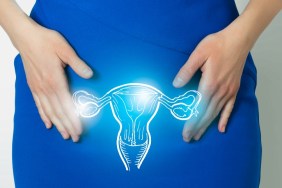Considering that fact, it’s surprising that we don’t understand more facts about ovulation, and have a fuller knowledge of the amazing ways that our bodies function! Learn 15 fun facts about your fertility.
Fun Fact 1: Ovulation Timing
Ovulation most normally occurs halfway through your menstrual cycle, although there’s a wide range of normal. Women with irregular periods should keep track of the duration of their cycle to determine what is normal for them.
Fun Fact 2: Body Language
At least 20% of women get a memo from their body that indicates ovulation: a twinge of pain or a slight abdominal cramping. You might also have breast tenderness or increased vaginal discharge.
Fun Fact 3: A Cast of Millions
Each woman is born with millions of immature eggs that are simply waiting for ovulation to begin, but usually only one egg is released with each ovulation cycle.
Fun Fact 4: Here Today, Gone Tomorrow
An egg lives for 12 – 24 hours after leaving the ovary. If a released egg is not fertilized, it will disintegrate and is absorbed into the uterus lining.
Fun Fact 5: Delayed Gratification
Implantation of a fertilized egg normally takes place 6-12 days after ovulation.
Fun Fact 6: Working Independently
Ovulation is a regular monthly occurrence. It happens even when a menstrual period hasn’t occurred – and the menstrual period can occur when ovulation has not.
Fun Fact 7: Outside Influence
Ovulation can be affected by stress, illness, or some other disruption to normal routines.
Fun Fact 8: Heightened Desire
Many women experience increased sexual desire in the several days before they ovulate. And one study concluded that women subtly improve their facial attractiveness during ovulation. It’s nature’s way of helping attract a partner when we are most fertile!
Fun Fact 9: Know Your Menstrual Disorders
Disorders that affect ovulation are classified as menstrual disorders. Oligoovulation is infrequent ovulation, and occurs in women who experience only 4 – 8 cycles per year instead of one each month. Annovulation is absence of expected ovulation and manifests with irregular periods, bleeding, or cessation of periods entirely. This happens most often in pre-menopausal women.
Fun Fact 10: Inducing Ovulation
A promising reproductive technology for patients with medical conditions that suppress ovulation is induced ovulation. A low dose of human chorionic gonadotrophin is injected for ovarian stimulation. Ovulation usually occurs 24-36 hours after the injection.
Fun Fact 11: Suppressing Ovulation
Contraception is achieved by suppressing ovulation. Hormone therapy can positively or negatively interfere with ovulation, and can give a sense of cycle control to the woman.
Fun Fact 12: Teamwork
After ovulation, the egg is available and ready to be fertilized by the sperm. Also preparing for the big event – the uterine lining, which thickens as it gets ready to receive the fertilized egg. If no conception occurs, this lining as well as blood is shed during menstruation.
Fun Fact 13: Ready and Waiting
Luckily, sperm are able to live to fertilize an egg a lot longer than the egg is willing to hang around…anywhere from 3-6 days. So if you have intercourse a few days prior to ovulation, there may still be plenty of little swimmers waiting to greet the egg when it makes its debut.
Fun Fact 14: Getting Busy
Yes, the actual day you ovulate is the peak of fertility, but fertility levels are somewhat elevated one day prior to ovulation and the baby dance can last for up to three days after ovulation. Count on 4-5 days when your opportunity to conceive is prime.
Fun Fact 15: Victory
If you’ve tracked your ovulation cycle and the egg is fertilized, your body will produce progesterone to support a developing pregnancy until the placenta is ready to take over. You can begin looking for pregnancy symptoms as early as a week after fertilization.








